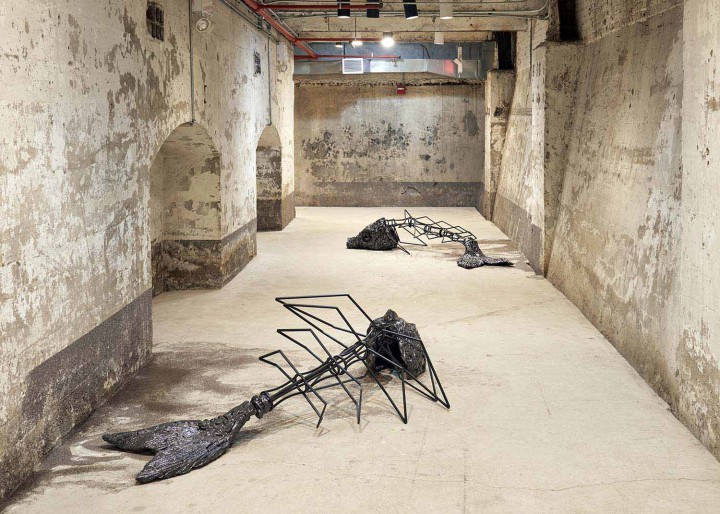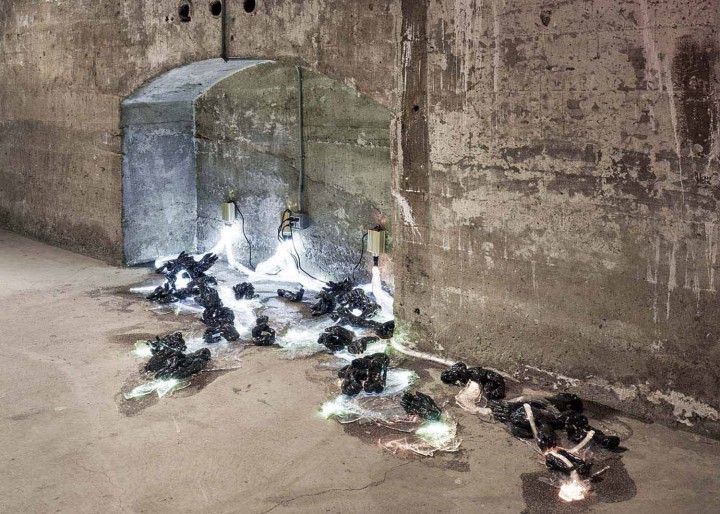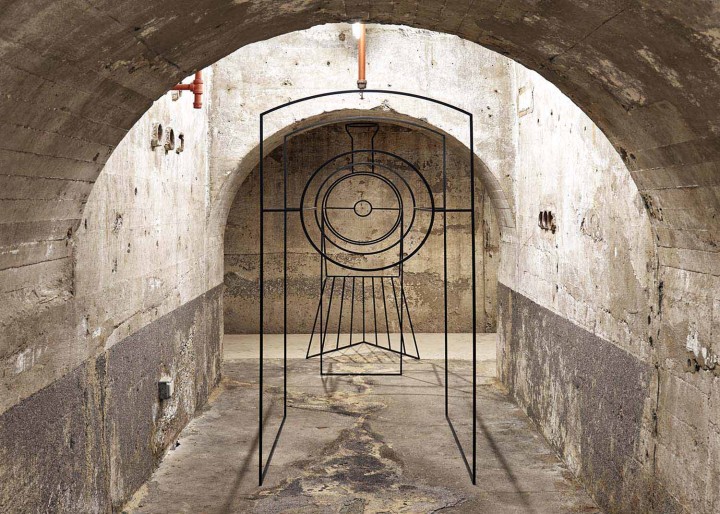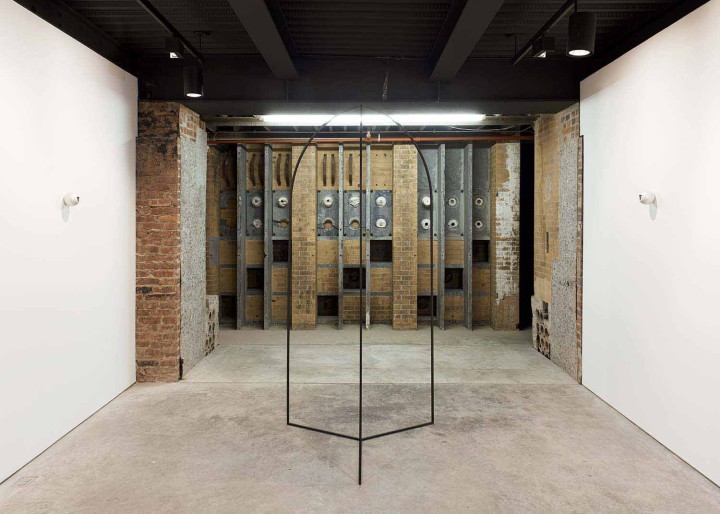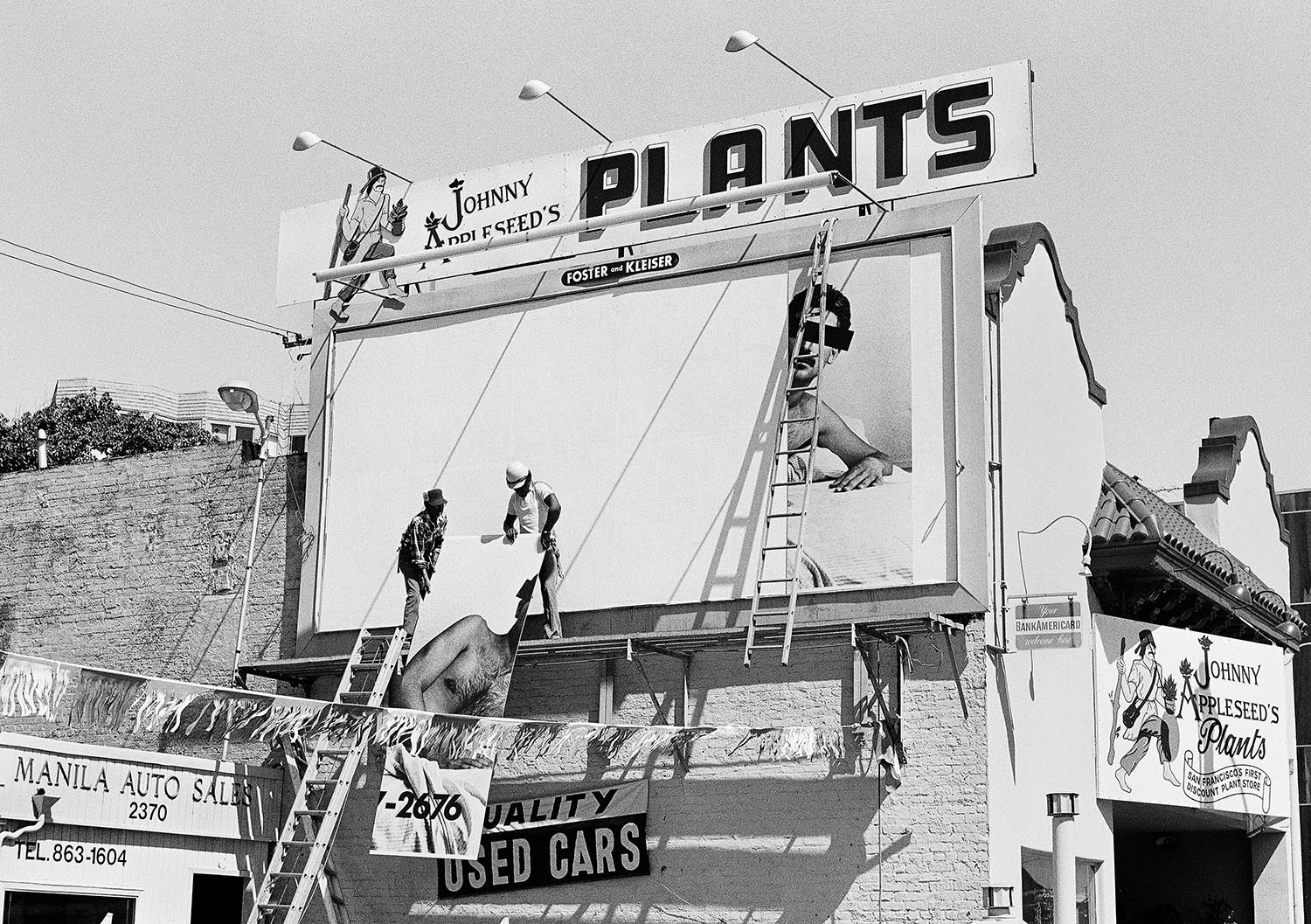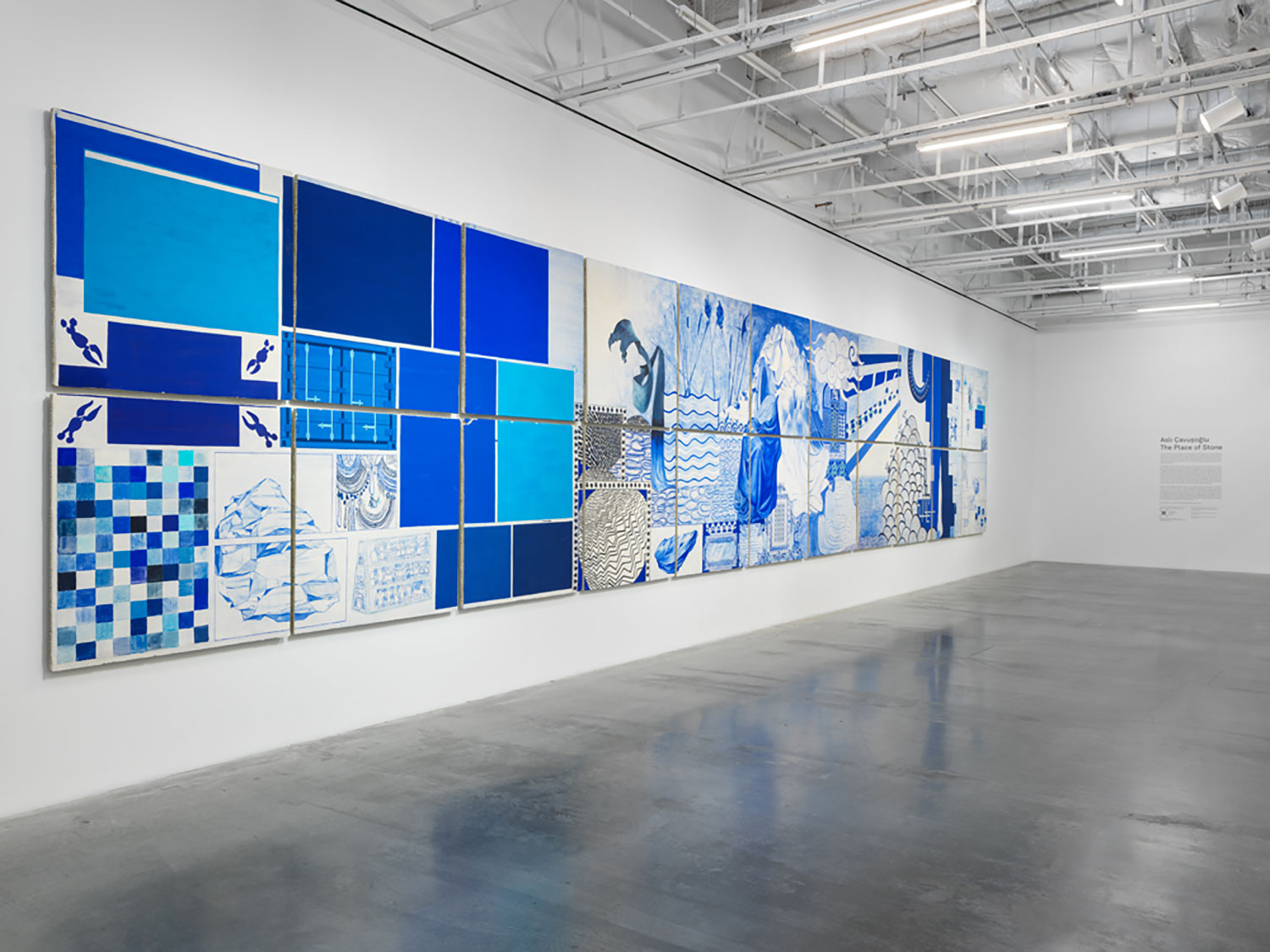The centerpiece of Rochelle Goldberg’s exhibition “The Plastic Thirsty” is a human-size pair of desiccated fish skeletons titled For every living carcass I and II (all works 2016). Slick with imitation-snakeskin glaze, the heads and tails consist of serpentine ceramic coils; slender steel bars animate the skeletons like antiquated machines. The deserted husk of one animal comprises the discarded corpse of another.
Goldberg negotiates SculptureCenter’s difficult basement galleries through a series of dream-like vignettes that imbue the show with a sense of abandonment and fearsome potential. However, other works strain to achieve the same effect. Try Again, I, II, III, IV, V is a series of magic 8-balls. Their fortunes tell of existential isolation, but the objects’ kitsch appeal renders them humdrum and impersonal. In Iron Oracle, a contour-line sculpture of a steam engine is lodged within a tunnel-like gallery, which is coated to hip-height with chia seeds. The high-water mark is an eerie, immanent and bodily register of geologic catastrophe, but it’s hard not to wonder whether trains, floods, magic 8-balls and snakeskins continue to be legible for their folkloric foreboding. Here, Goldberg’s adept craft and material vocabulary struggle to wrest an acute or specific transformation from the histories of the symbols themselves — they remain too general to get under the skin.
Nonetheless, something still hides in the dungeon-like basement. A fiber-optic cable’s cold white light glows through a crawlspace in the concrete bulwark. The space is barely large enough to fit an adult; and as the light-line recedes into shadow, intermittently obstructed by indecipherable objects, it appears leftover from some prior industrial function. It’s creepy to think that Original Spill has been overlooked on prior visits to the institution — it exists within a liminal zone, more infestation than installation. Goldberg’s show belongs to this post-apocalyptic dream, but oftentimes it leaves for want the unwieldy and inscrutable experience of such dystopic imaginings.

